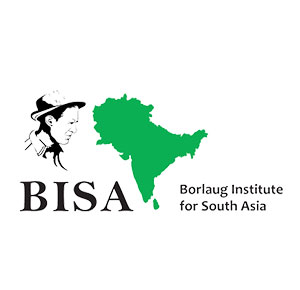About us
Brief History
In India, the wheat research started in an organized manner exactly hundred years ago during British period after joining of Sir Howards as the Imperial Botanist at Pusa (Bihar) in 1905. Later on with the establishment of the Indian Council of Agricultural Research in 1929, it became the main funding agency and promoter of wheat research in India and the Indian Agricultural Research Institute (IARI) played an important role for the wheat Research related activities. An important milestone in this process was the establishment of the All India Coordinated Wheat Improvement Project (AICWIP) in 1965 by the ICAR. The AICWIP was elevated to the status of the Directorate of Wheat Research in 1978 and in 1990 it moved from IARI, New Delhi, to its present location at Karnal, 130 km north of Delhi along with two regional stations located at Flowerdale, Shimla and Dalang Maidan (Lahaul valley). In 2014, it became an institute, ICAR-Indian Institute of Wheat and Barley Research. By doing so, the ICAR formalised the establishment of a distinct institutional identity for the second most important cereal crop of the country.
In addition to the headquarters at Karnal, IIWBR also operates a Regional Research Station at Flowerdale, Shimla (established in 1930), which serves as a national facility for monitoring wheat rust pathotypes, evaluating advanced generation material, postulating probable rust resistance genes in the test lines and act as a repository for maintenance of the wheat rust virulences. Besides the institute operates an off-season nursery facility at Regional Research Station, Dalang Maidan (Lahaul & Spiti), Himachal Pradesh under the AICRP for advancing of generation, making crosses including winter x spring hybridization, multiplying seed, purify stocks, and for evaluating germplasm for yellow rust resistance and also research farm at Hisar.
Through coordinated research efforts more than 498 wheat varieties suited to different agro-ecological conditions and growing situations have been released so far. These genotypes were very successful in increasing the wheat production from a mere 12.5 million tons in 1964 to 107.59 million tonnes during 2019-20. Development of such genotypes also resulted in intensive cropping and created additional need for fertilizer and water. It is now realized that sustaining the productivity of the Indo-Gangetic plain is essential to provide food security to the population of India, which by the year 2050 A.D. will be about 1.50 billion. The projected demand for wheat by the year 2050 A.D. will be about 140 million tons and to achieve this, new technological advances are to be made. In the area of crop improvement emphasis would be to develop new genotypes that are responsive to high input management and capable of yielding beyond 7t/ha and average productivity of 4.60 t/ha at country level. At the same time, the new genotypes must be nutrient and water use efficient. With holding the strong base of rust resistance, emphasis will be to develop short duration genotypes resistant to leaf blight especially for eastern India. Innovative approaches to produce hybrid wheat that will have at least one ton yield advantage over the commercial varieties will draw attention. We should highlight the importance of heat tolerance, drought resistance, salt tolerance & water logging. Emphasis would be given on biofortification with enhanced bioavailability of micronutrinets such as Fe and Zn. The potential of developing transgenic to break the yield barrier will become a reality and might be accomplished during the first half of this century.









